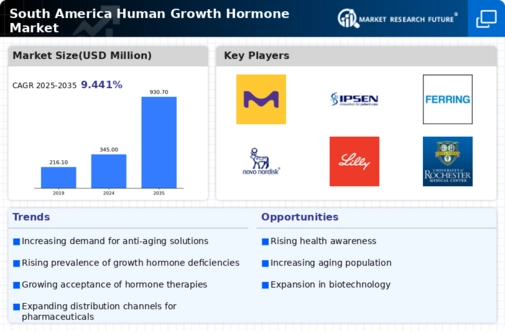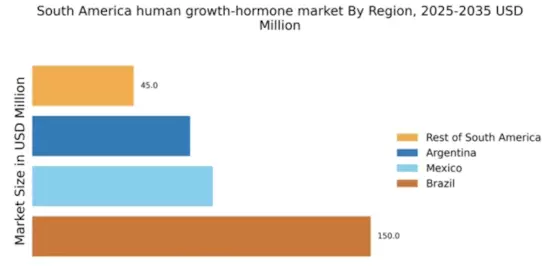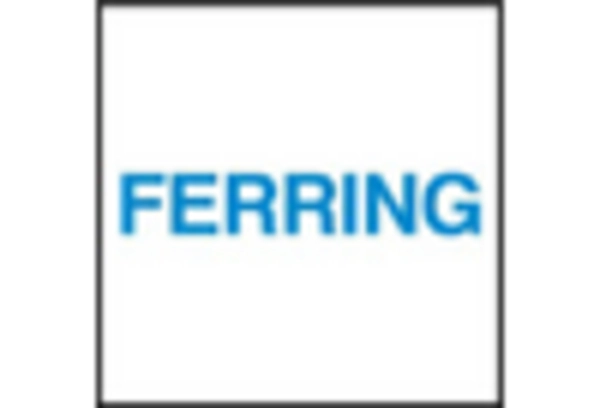Growing Interest in Sports and Fitness
The human growth-hormone market in South America is also being driven by a growing interest in sports and fitness among the population. Athletes and fitness enthusiasts are increasingly seeking performance-enhancing substances, including human growth hormone, to improve their physical capabilities. This trend is particularly evident in competitive sports, where the demand for growth hormone as a means to enhance recovery and muscle growth is on the rise. Market analysts suggest that this segment could account for up to 25% of the total market share by 2026. As the fitness culture continues to thrive, the human growth-hormone market is likely to benefit from this increased interest, leading to higher sales and broader acceptance of growth hormone therapies.
Expansion of E-commerce and Online Pharmacies
The human growth-hormone market in South America is witnessing a transformation due to the expansion of e-commerce and online pharmacies. With the rise of digital platforms, consumers now have easier access to growth hormone products, which has the potential to increase market penetration. Online pharmacies offer convenience and often competitive pricing, making it easier for patients to obtain necessary treatments. Recent data suggests that online sales of human growth hormone products could grow by 30% in the coming years, reflecting a shift in consumer purchasing behavior. This trend indicates that as e-commerce continues to evolve, the human growth-hormone market will likely see a significant boost in sales and accessibility.
Rising Prevalence of Growth Hormone Deficiency
The human growth-hormone market in South America is significantly influenced by the rising prevalence of growth hormone deficiency among various demographics. Conditions such as Turner syndrome, Prader-Willi syndrome, and chronic kidney disease have been linked to growth hormone deficiency, leading to increased demand for therapeutic interventions. Recent studies indicate that approximately 1 in 3,000 children are diagnosed with growth hormone deficiency, which is expected to drive the market further. As healthcare systems improve their diagnostic capabilities, more individuals are likely to be identified and treated, potentially increasing the market size by 20% over the next few years. This growing recognition of growth hormone deficiency is a critical driver for the human growth-hormone market in the region.
Advancements in Biotechnology and Manufacturing
Technological advancements in biotechnology and manufacturing processes are playing a pivotal role in shaping the human growth-hormone market in South America. Innovations in recombinant DNA technology have led to the production of more effective and safer growth hormone products. As a result, the availability of high-quality human growth hormone has increased, making it more accessible to patients. The market is projected to witness a growth rate of 12% annually, as manufacturers invest in research and development to enhance product efficacy and safety. This trend indicates that as production methods improve, the human growth-hormone market will likely expand, catering to a broader audience seeking effective treatment options.
Increasing Awareness of Growth Hormone Benefits
The human growth-hormone market in South America is experiencing a surge in demand due to increasing awareness regarding the benefits of growth hormone therapy. As more individuals become informed about the potential advantages, such as improved muscle mass, enhanced recovery, and anti-aging effects, the market is likely to expand. Reports indicate that the awareness campaigns led by healthcare professionals and organizations have contributed to a notable rise in prescriptions. In 2025, the market is projected to grow by approximately 15%, driven by this heightened awareness. This trend suggests that as consumers recognize the therapeutic potential of human growth hormone, the industry will continue to flourish, attracting both new patients and healthcare providers eager to offer these treatments.


















Leave a Comment